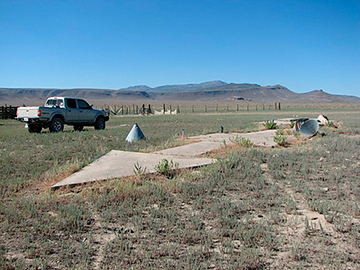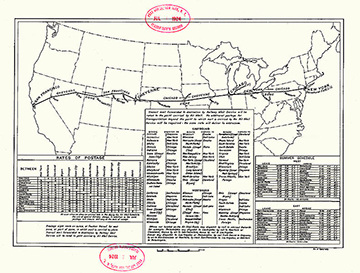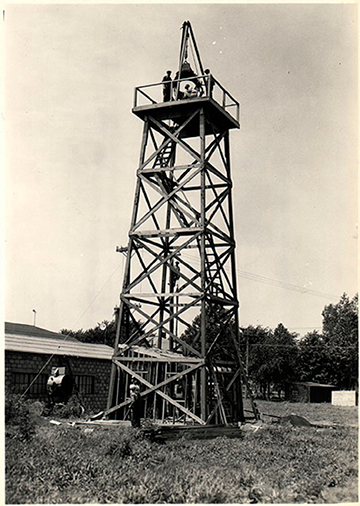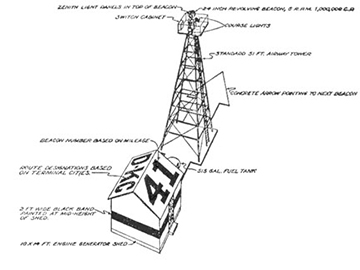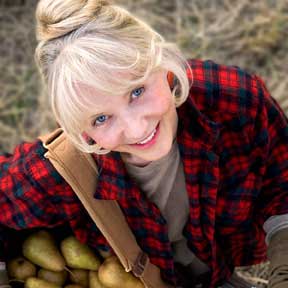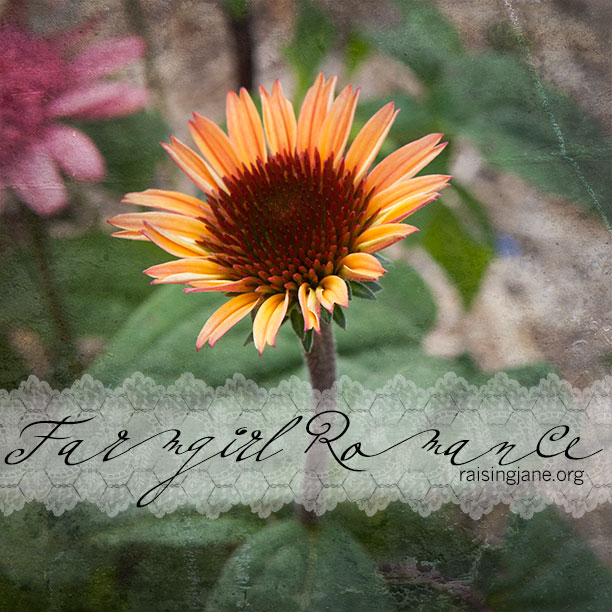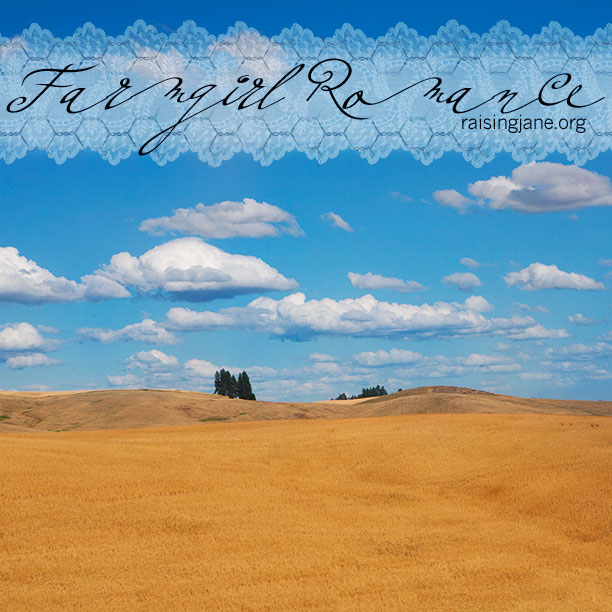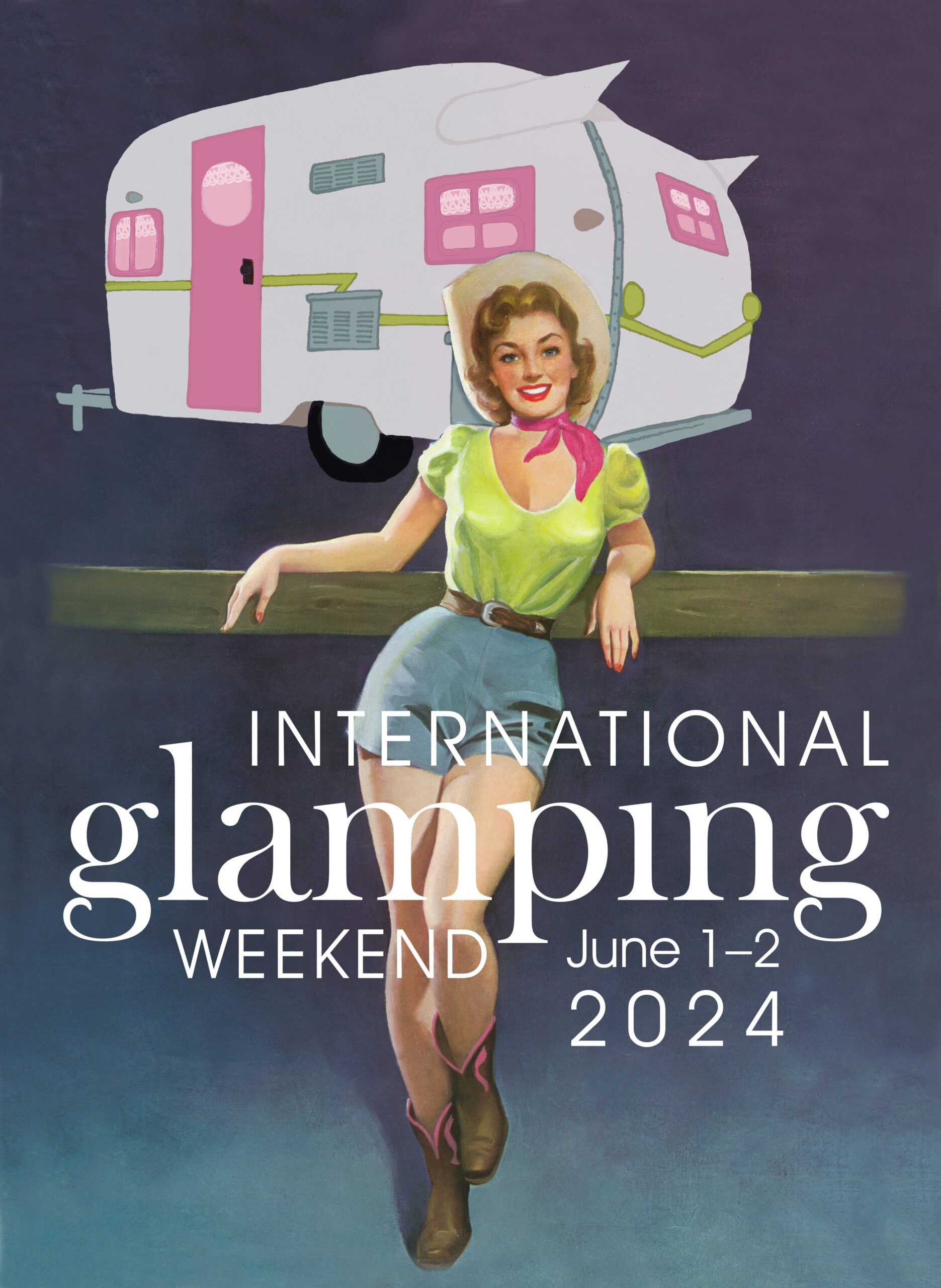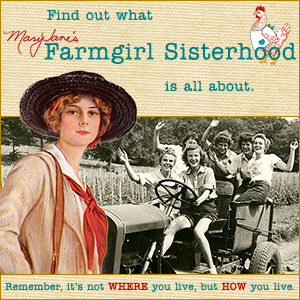What’s going on with this little guy’s muzzle, er, trunk?
Schnoz … sniffer … honker?
You may have recognized his protruding proboscis before you knew his name …
Or maybe his little springy piece of hair?
Meet Kilroy.

“Kilroy was here” graphic. Courtesy of Wikimedia Commons; KovacsUr
Anyone born between 1913 and 1955 (who didn’t live under a rock) would be aptly familiar with our long-nosed friend. (Though if you did live under a rock, you probably had to come out sometime, and Kilroy may have been there first.)
During church service as a young girl, my dad and I were known to draw a Kilroy or two to get through the length of service. But his origins remained a bit of a mystery until 1946.
The American Transit Association sponsored a contest that year, “The Real Kilroy,” which was announced on the radio program “Speak to America.”
The person who could prove they were the real Kilroy would win a real trolley car.
About 40 men laid claim to the infamous drawing, but only one stood atop the rest. That was James Kilroy from Halifax, Massachusetts.
Here’s how his story went:
Mr. Kilroy was a 46-year-old shipyard worker who counted rivets during the war. As he counted, he would place a check mark on each so as not to count twice. Riveters were paid for each completed rivet.
After he clocked off for the day, the riveters would wipe off the check marks. As the shipyard inspector went on duty, he would count the unchecked rivets a second time. This resulted in double pay for the riveters.
Kilroy’s boss, noticing the increase in the riveters’ wages, asked Kilroy to investigate. When the scandal was discovered, a solution was devised.
Trying to use a more permanent solution, such as paint, would have proven tricky, considering the tight spaces. So Kilroy stuck with his waxy chalk, but added “KILROY WAS HERE” next to each check mark. Then, he eventually added the sketch of the long-nosed fellow peering over the fence.

Kilroy was here, seen in Kansas City, MO. Courtesy of Wikimedia Commons; Marshall Astor
Once it was discovered they had been caught, the riveters quit wiping away his marks. Maybe the guilt of Kilroy “watching” stopped them in their tracks?
Normally, the chalk marks and rivets would have been covered up with paint. With the war on, however, there wasn’t any time to paint over them as they left the shipyard at an increasing speed.
Therefore, Kilroy’s inspection trademark was seen by thousands of servicemen.
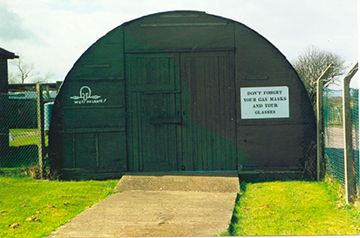
Kilroy. Courtesy of Wikimedia Commons; Ron Hann
Kilroy made a lasting impression with the troops and was mimicked everywhere—from Berlin to Tokyo. It became a challenge to see how far, high, or low Kilroy could go.

Photograph of a Kilroy was here-style snowman; Courtesy of Wikimedia Commons; Florian Kilzer
Kilroy is rumored to be atop Mount Everest, the Statue of Liberty, and on the underside of the Arc de Triomphe. Some say he is even scrawled in the dust on the moon.
The moon? Well, who knows, but he is on the back of the National World War II Memorial in Washington, D.C.—forever immortalized.
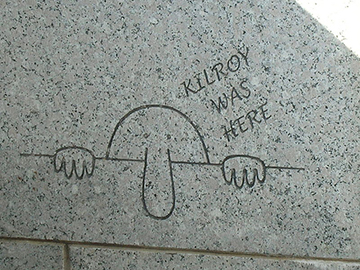
Kilroy was here engraving at the National World War II Memorial in Washington, D.C. Courtesy of Wikimedia Commons; Matt H. Wade
Wherever Kilroy is, and however he came about (there’s some debate about a similar character named “Foo” who was created by the Australians during World War I), he gave a little piece of charm and distraction from the war to troops everywhere.
Oh, and James Kilroy won the trolley car.
















































